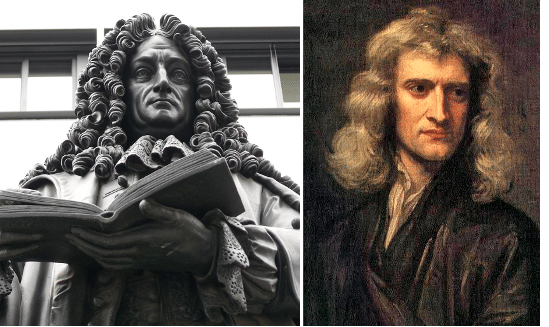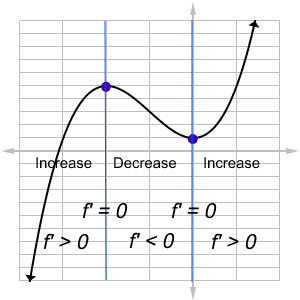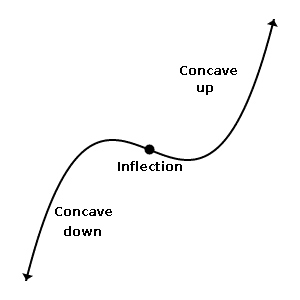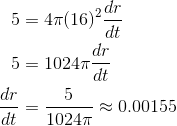Ap Calculus Review Mc3- Applications of the Derivative Answer Key
AP Calculus Review: Applications of Derivatives
Calculus is primarily the study of rates of alter. However, at that place are numerous applications of derivatives beyond just finding rates and velocities.
In this review article, nosotros will highlight the most important applications of derivatives for the AP Calculus AB/BC exams.
Applications of Derivatives
Here is a list of some of the essential derivative applications.
- (Instantaneous) Rates of Change
- Velocity
- Acceleration
- Slope and Tangent Lines
- Assay of Graphs
- Increase/Subtract
- Relative Extreme Points
- Concavity
- Inflection Points
- Related Rates
- Optimization
Rates of Change
Perchance the most of import awarding of the derivative is in finding rates of modify. In fact, this is why Newton (and Leibniz independently) invented Calculus in the first place!

Gottfried Wilhelm Leibniz (left) and Sir Isaac Newton (right), the two Discoverers of Calculus.
Suppose y = f(ten) is a function that models some existent-globe beliefs. Hither, the input is x and output is y. A natural question in the sciences is: How does the output change every bit 1 changes the input? In other words, what is the modify in y resulting from a change in x?
For most purposes, information technology makes sense to consider the ratio of the changes. For example, if y changes twice every bit rapidly every bit x, then that would be a charge per unit of change of 2.
So this leads to the concept of average rate of change, Δy/Δ10. (See AP Calculus Review: Average Rate of Change for more near this.)
Finally, by allowing the change in input to arroyo 0 (past taking a limit), we become the definition of derivative:

Of course afterward you acquire the definition, then y'all get to learn all of the shortcut rules for derivatives that allow yous avert taking limits at all!
Example: Rates of Change
Suppose the population of a small city can be modeled by P = 40532 due east 0.03t, where P is total population and t is time in years after the year 2000. How quickly was the population increasing in 2002?
Solution
The phrase "how apace" ways "at what charge per unit"? And so nosotros utilise a derivative to detect the rate of change.
P ' = 40532 due east 0.03t (0.03) = 1215.96 eastward 0.03t
The twelvemonth 2002 corresponds to t = two.
P '(2) = 1215.96 e 0.03(2) = 1291.fifteen
Thus the city was growing at a rate of about 1291 people per year.
Velocity and Acceleration
By definition, velocity is the rate of change of position. So, if you have a position office s(t), then the velocity function is nothing more than the derivative of due south(t).
Analogously, acceleration is the rate of change of velocity – hence the second derivative of position.

Slope and Tangent Lines
The derivative value f '(a) measures the slope of the curve y = f(10) at the point x = a. By extension, and then the derivative also gives you the slope of the tangent line in that location.

The "Devil'south Bend" with a tangent line fastened.
Here is another reference for tangent lines and slopes of curves: How to Find the Slope of a Line Tangent to a Curve.
Instance: Tangent Lines
Find the equation of the tangent line to the bend y = (i/3)x 3 – (1/2)x 2 + threex – v at x = half-dozen.
Solution
Gradient = Derivative. Here, dy/dx = (1/3)3x 2 – (1/2)2x + iii = ten 2 – x + iii.
Therefore, the slope at x = 6 is:
m = (vi)2 – (6) + three = 33.
We too need the y-coordinate of the point. So plug x = 6 into the original function every bit well.
(one/3)(six)iii – (1/2)(vi)ii + 3(6) – v = 67.
Finally, using point-slope grade, we construct the equation of the tangent line.
y – 67 = 33(x – 6) = 33x – 198, or
y = 33x – 131
Analysis of Graphs
There's quite a lot that Calculus tin can tell united states of america almost the shape of a graph. We'll focus on what the derivative and 2d derivative can say about a graph.
For a detailed review of these topics, you can besides check out: AP Calculus Exam Review: Analysis of Graphs
First Derivatives — Increase, Decrease, and Relative Extrema
The first derivative measures the slope of the curve. So just every bit slopes of lines tin tell y'all whether the line increases, decreases, or is horizontal, the derivative tin can exist used to locate intervals of increase and decrease, equally well as any turnaround points.
| If f ' > 0 | f is increasing (on an interval) |
| If f ' < 0 | f is decreasing (on an interval) |
| If f '(a) = 0 | f has a critical point at x = a |
At a critical signal, the graph may turn around (but it'due south not a guarantee). So you tin employ the Kickoff Derivative Test to decide whether each critical point is a relative maximum, minimum, or neither.
Beginning Derivative Test: Suppose ten = a is a critical point for a part f.
- If the sign of the derivative f ' changes from positive to negative at a, so at that place is a relative (local) maximum at x = a.
- If the sign of the derivative f ' changes from negative to positive at a, then there is a relative (local) minimum at x = a.
- Lastly, if the sign of the derivative f ' does not alter at a, so at that place is no relative farthermost signal there.

Second Derivatives — Concavity and Inflection Points
Second derivatives give you information most concavity (direction of curving), and inflection points (transitions between unlike concavities).
| If f '' > 0 | f is concave up (on an interval) |
| If f '' < 0 | f is concave down (on an interval) |
| If f ''(a) = 0 | (a, f(a)) is a possible point of inflection |

From left to right: The graph is concave down when f " < 0 and concave upward when f " > 0. The point of transition is the inflection betoken.
For more details, check out: AP Calculus Review: Inflection Points.
Related Rates
Sometimes the behaviors of 2 quantities are tied together. For example, raising the temperature of a gas in a fixed container will raise its pressure likewise.
The method of Related Rates can be used to understand how rates of alter are related based on an algebraic or geometric relation amidst the original variables.
Because the word "rate" appears in this topic, it should exist no surprise that derivatives will exist used!
Case: Related Rates
A spherical airship is filled with helium at a constant rate of v cm3 per 2nd. How quickly is the radius increasing when the radius is sixteen cm?
Solution
Beginning we demand to remember the volume formula for the sphere. This relates the two variables mentioned in the problem: volume (5) and radius (r).

The volume of whatever sphere, including this beach ball, is V = (4/3)πr 3.
First, we have time derivatives of both sides of the volume formula to produce a related rate.

Next, nosotros plug in the known information, dV/dt = v, and r = 16.

Thus, the radius is increasing at 0.00155 cm per second.
For more practise, endeavour this link: AP Calculus Review: Related Rates.
Optimization
Optimization is only the process of finding a maximum or minimum value. However, in most optimization problems, at that place is more than one input variable and certain constraints on the variables. So information technology takes quite a flake of algebra to gear up up the function earlier you lot tin take its derivative.
Understanding optimization issues really takes seeing a fair number of them worked out. You can find a detailed review of optimization here: AP Calculus Review: Optimization.
Summary
Now that you lot've seen the diverse ways in which applications of derivatives tin appear on the AP Calculus exams, you can be more than confident on test day! Merely continue in mind a few key concepts from which all of these applications arise.
- Derivatives measure out rates of change.
- Derivative values are slopes.
By the mode, Magoosh can aid yous study for both the Saturday and Human action exams. Click here to acquire more!
Source: https://magoosh.com/hs/ap/ap-calculus-review-applications-derivatives/

0 Response to "Ap Calculus Review Mc3- Applications of the Derivative Answer Key"
ارسال یک نظر